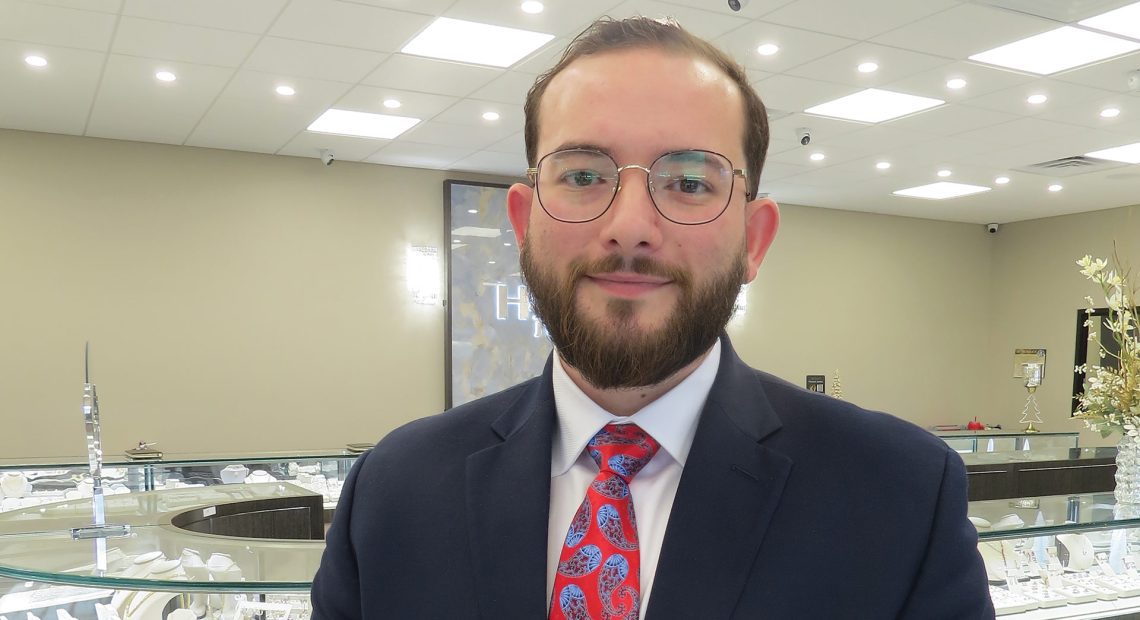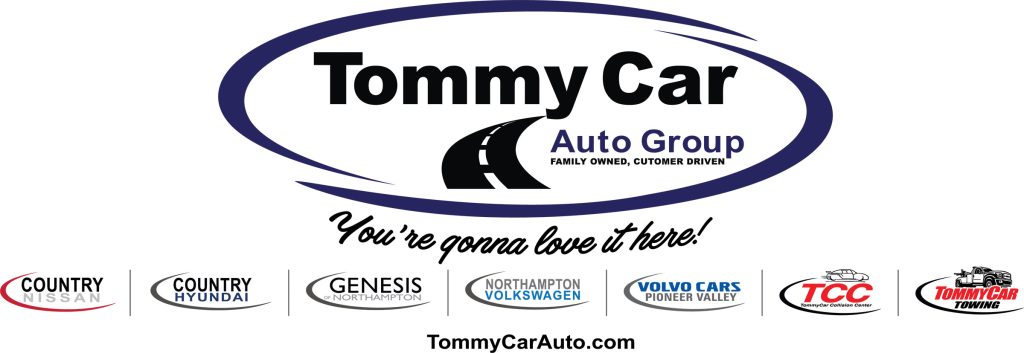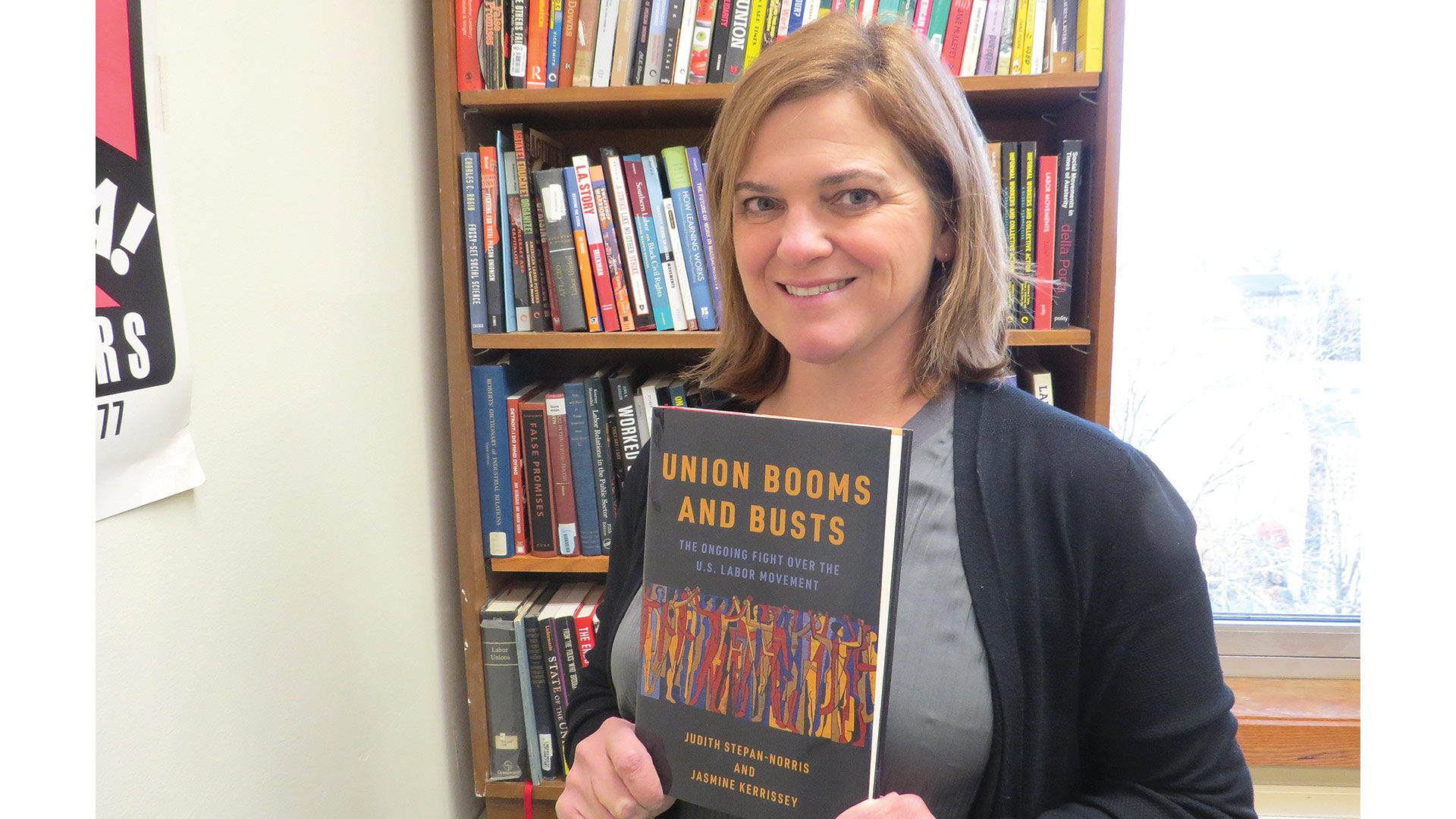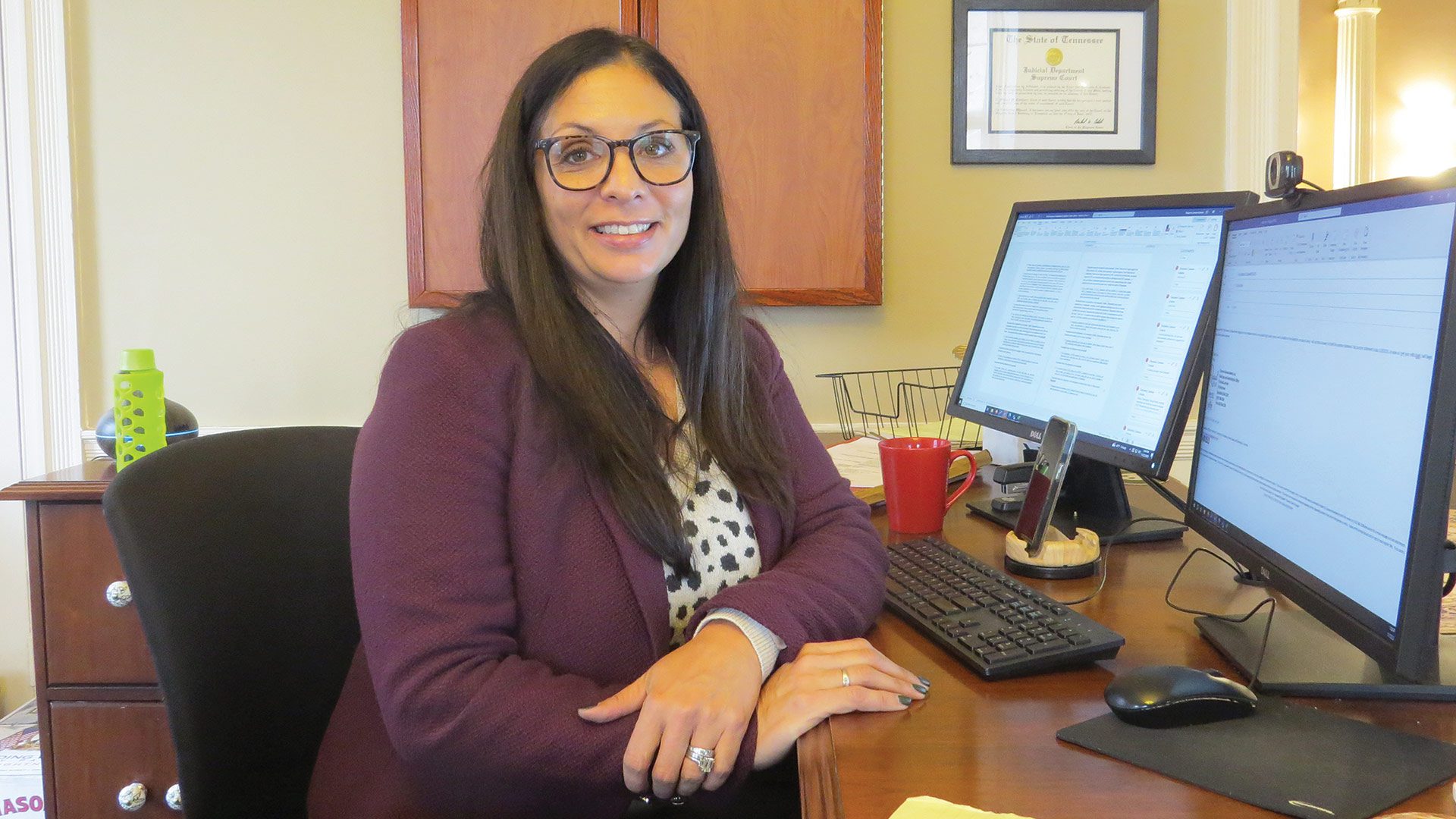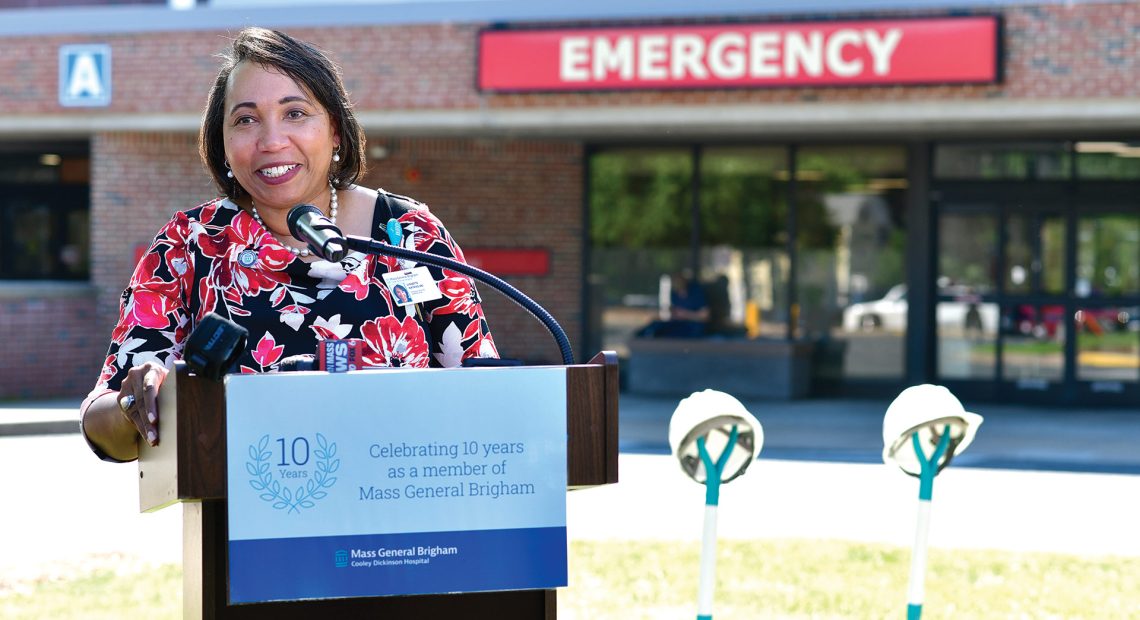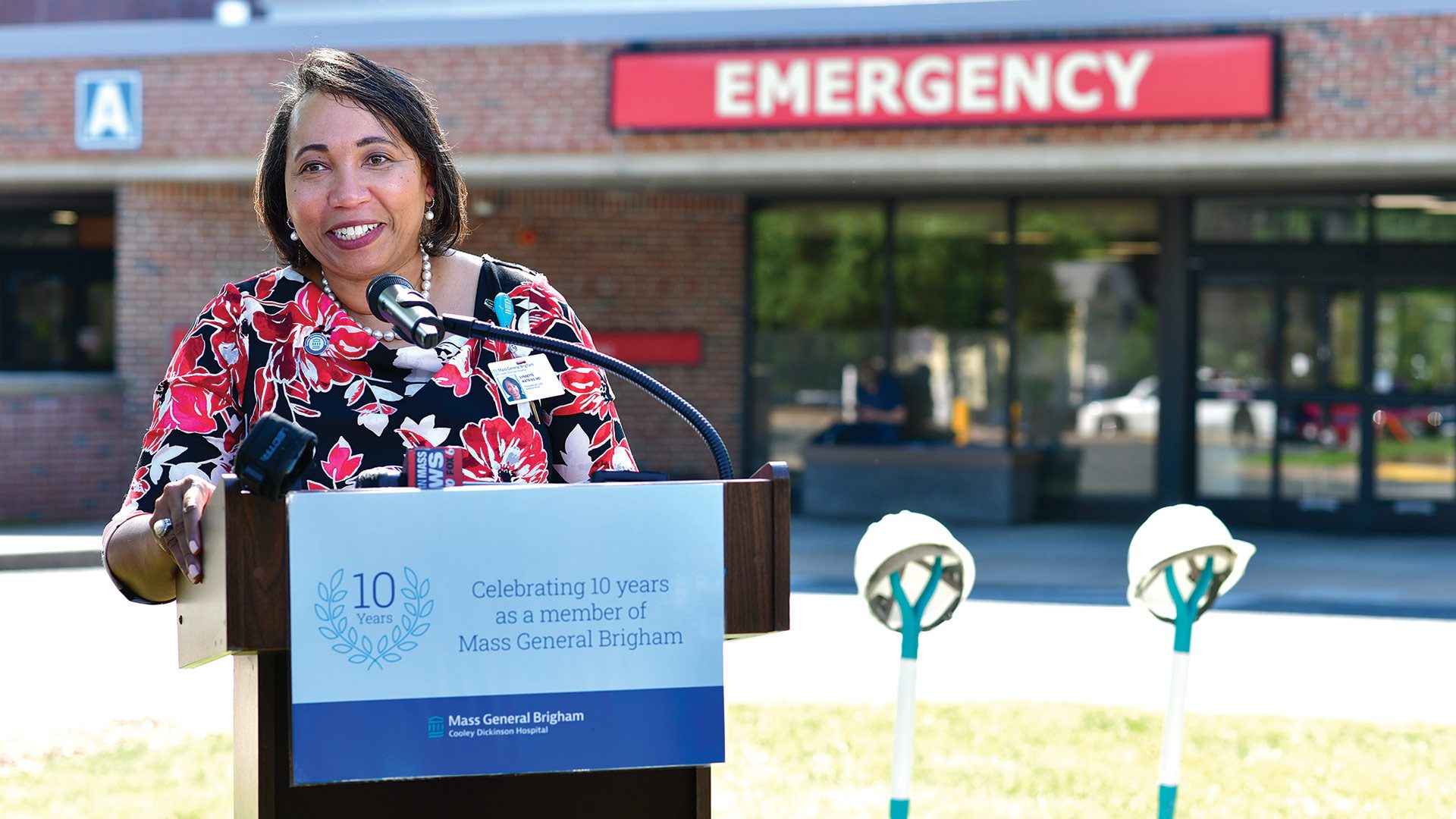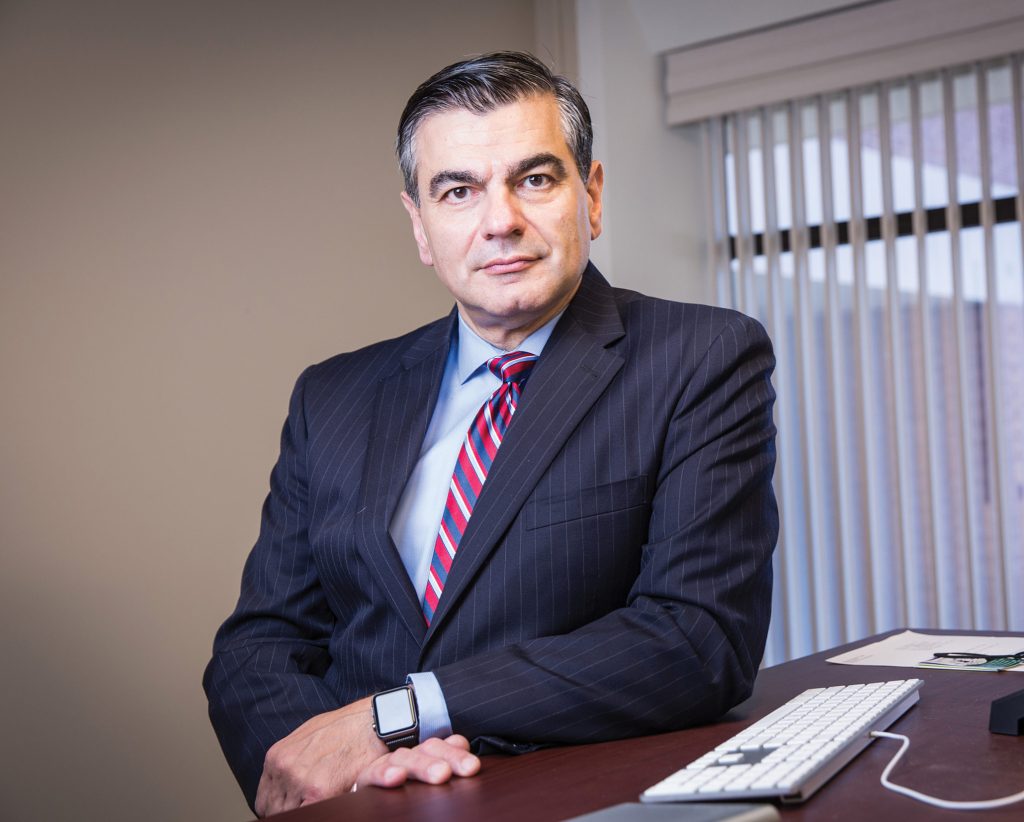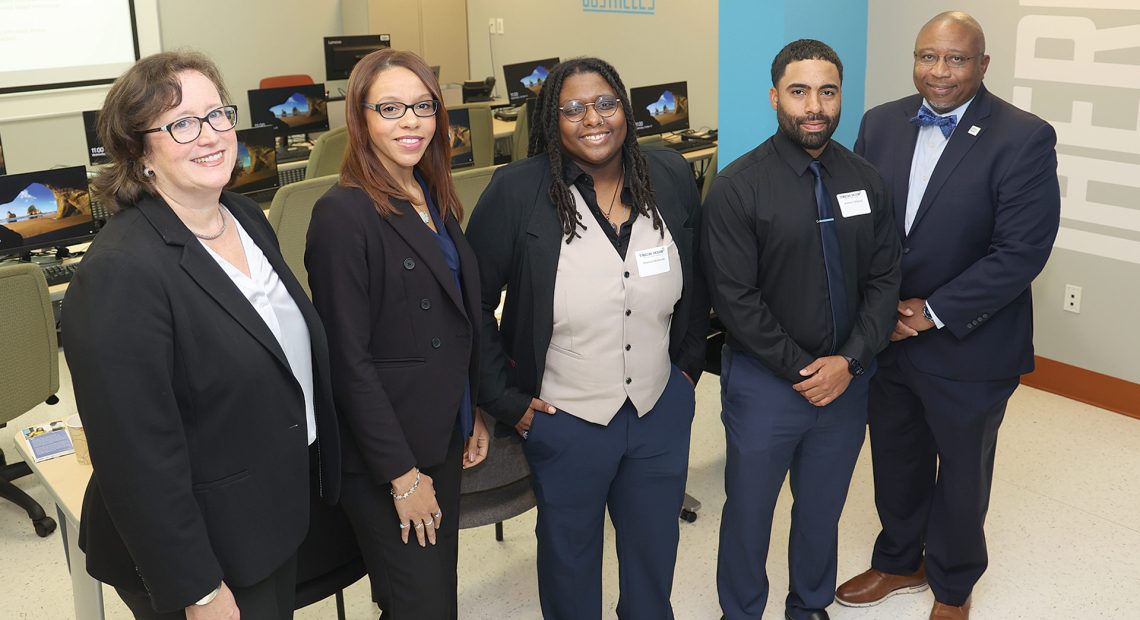Shining Examples
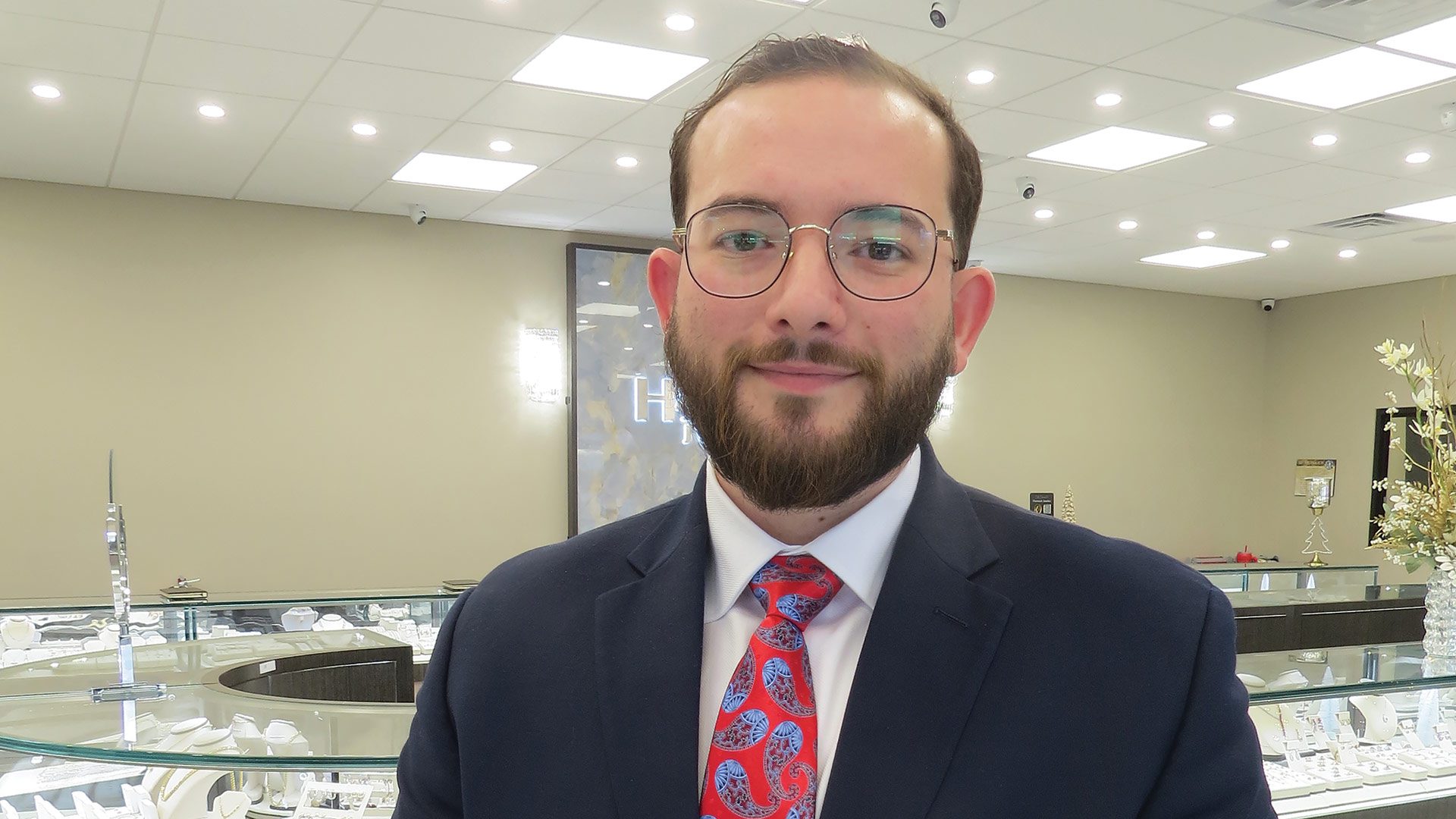
CEO Maroun Hannoush
“Ebb and flow.”
It was with those three words that Maroun Hannoush succinctly and quite effectively summed up the 34-year history of his family’s business, Hannoush Jewelers.
They don’t tell the whole story, obviously, but they get the main point across. This enterprise has seen near-constant change in many different forms: stores being opened, stores being closed or consolidated, stores changing locations, stores moving into malls, stores moving out of malls into standalone locations, new family members joining the business, new product lines being added, new features added to the digital experience … the list goes on.
Change. That is the one word that best defines a venture that was launched by eight brothers — in order, Elie, Joseph, Tony, Norman (Maroun’s father), Peter, George, Camile, and Nabile — who came to this country from Lebanon in the early ’70s, and now involves six of those brothers and many of the three dozen members of the next generation, said Maroun, CEO of Hannoush Jewelers, who represented the family for this article
“I have a cousin in almost every store in Western Mass. and another five in Connecticut,” he said, adding that several members of the second generation have chosen other fields, ranging from commercial and residential real estate to salons to ownership of a gun and ammunition shop, providing more evidence of how one of the region’s more intriguing — and most successful — family business ventures continues to write new chapters of entrepreneurship.
Indeed, a family that has always been entrepreneurial continues to exude that quality, moving into ventures ranging from other jewelry chains, such as the Michaels chain, to a bar and grill in Westfield; from a chain of gift stores (Giftology) to a private golf course (Springfield Country Club), now owned by several of the eight brothers.
“Each brother is focused on their grouping of stores, and some are finding opportunities outside of the malls, while some are finding opportunities inside new malls, strip centers, and free-standing locations like this one, but everyone is looking for new opportunities.”
But it is the family of jewelry stores that is still the main focus — and still the source of a good deal of ebb and flow and also relationship building, the foundation on which this venture was built, said Maroun, adding that these patterns will certainly continue into the future.
Indeed, the family continues to look for new opportunities to grow, both organically and through acquisition, he said, adding that there are solid prospects in both categories (more on that later).
In his current role, Maroun essentially oversees 11 Hannoush locations owned by his father. He sat down with BusinessWest in one of them, the company’s new location on Boston Road, directly across the street from the Eastfield Mall — or what’s left of it — where the company had a location for more than 30 years.
The Hannoush chain, or this segment of it, anyway, wanted to stay in the Boston Road area, said Maroun, and it was fortunate to secure, with the help of one of his brothers, Daniel, who works in commercial real estate, what was an M&T Bank branch for its latest location and open in that site just days after that mall officially closed its doors.
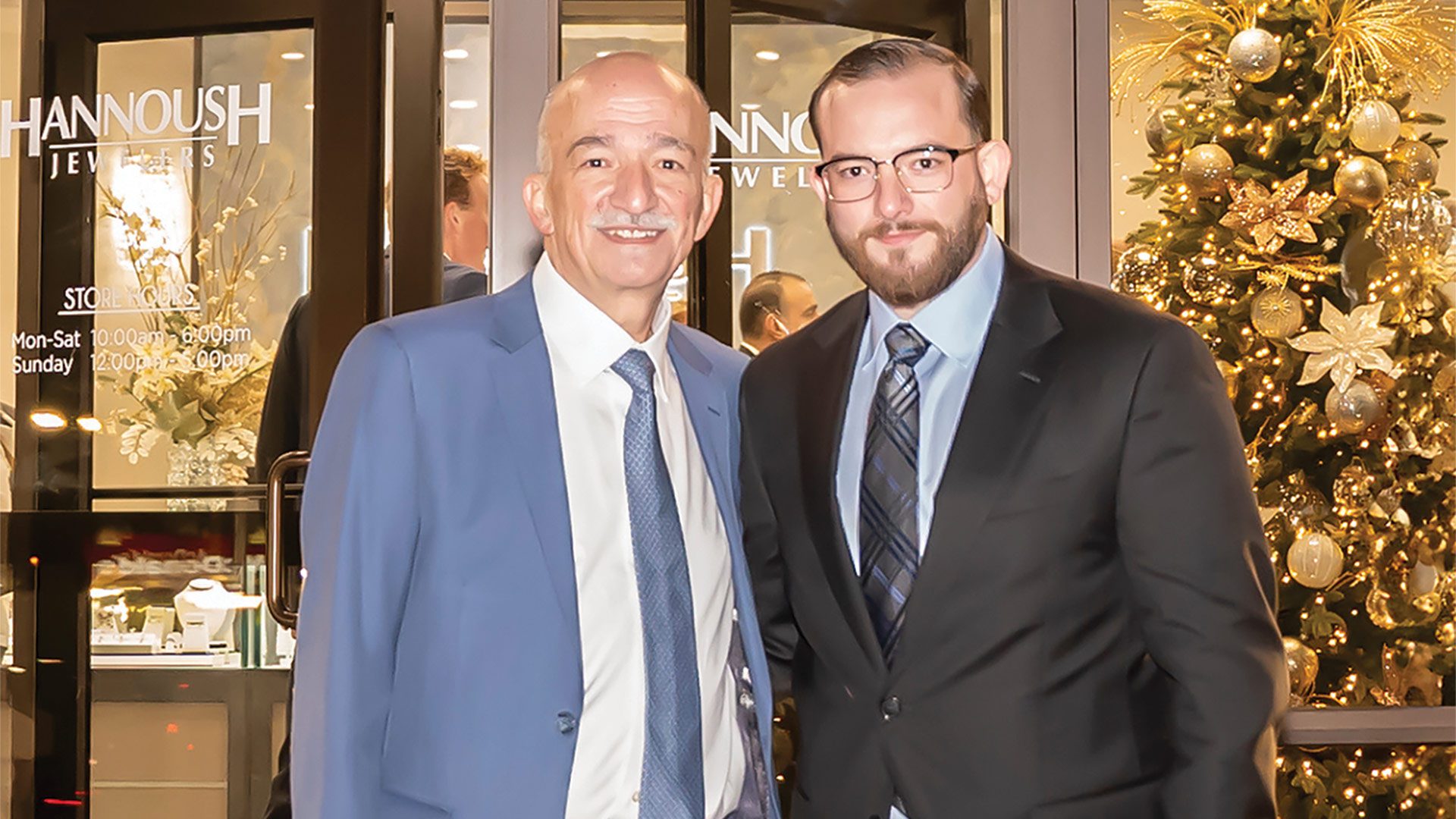
Maroun Hannoush, right, with his father, Norman, at the new location on Boston Road.
For this issue, BusinessWest talked at length with Maroun to bring some clarity — yes, that’s an industry term — on the state of the Hannoush family’s growing portfolio of businesses, especially the jewelry chain that is at the heart of it all, and what the future might bring to a venture with such a rich past and present.
Diamonds in the Rough
Hannoush told BusinessWest that, like many of the sons and daughters of the eight brothers who started this venture, he grew up in the jewelry business, starting with cleaning jewelry before moving on to buying diamonds and working the sales floor while attending Cathedral High School and then American International College.
“This is the only business I’ve worked in, and it has captivated me from a very early age, since I started working in my father’s and my uncles’ shop in West Springfield,” he said, referring to the operation’s hub on Capital Drive. “I did a little bit of everything; from age 13 to now — I’m 31 — I’ve been learning every aspect of the business, and that continues. The learning never stops; I call myself a student for life.
“My Uncle Peter taught me how to look at diamonds, what to look for,” he went on. “My Uncle Camile taught me about customer relations and making sure the customers were happy and how to keep them satisfied. Many of my uncles had different responsibilities, and I tried to learn from each of them.”
In many ways, he’s building on the work of his father and uncles, who, as noted, came to this country from Lebanon in 1971. They originally settled in Lawrence, where an aunt lived, and then moved to the Springfield area in the mid-’70s. Several of the brothers were apprentice jewelry makers in Lebanon, and they started doing jewelry repair in Lawrence and eventually for Kay Jewelers. They continued doing repairs for Kay at its Eastfield Mall location before deciding to go into the manufacturing and retail business for themselves.
They opened their first retail location in 1980 in the former Fairfield Mall in Chicopee, which met its demise in the late ’90s, and from there, they expanded across this region — opening new stores in Springfield, Holyoke, Hadley, and several communities in Connecticut — and then well beyond. Indeed, the Hannoush footprint, which at its height included 75 stores, now numbers roughly 50 locations in 12 states — most operated by the family, but there are few franchises, said Maroun, who counted the states in his head and with his fingers to make sure he got the number right.
That’s an indication of how change remains a constant, he said, adding that there are many manifestations of this quality, as we’ll see.
Another constant through all of this is the Hannoush family itself, he said, but even within it, there has been steady change as members of the second generation settle into different roles, much as the eight brothers did — and still do.
Indeed, early on, and even today, the eight brothers have, as Maroun mentioned earlier, assumed specific responsibilitiesv within the company, with Peter handling the diamond importing, George handling the watch department, his father serving as treasurer, and so on.
“We want to see them not for one occasion, but many joyous occasions. The gift for a boyfriend or girlfriend … that can lead to an engagement ring, and that engagement ring can lead to a wedding band, and that wedding band leads to anniversary gifts and birthday gifts. We want to create relationships that can last a lifetime.”
Today, the work of operating the broad chain of stores is now spread out over more than 20 family members serving in a variety of different roles.
In 2018, a comprehensive estate plan was drawn up that essentially divides the portfolio of Hannoush stores into six spheres, one for each of the six brothers still active with the jewelry business. Overall, this is a venture with what Maroun called “10 companies operating under the same banner,” one for each of the brothers and four franchises.
Maroun manages the 11 stores under his father Norman’s ownership — the two in Springfield (Boston Road and a location inside MGM Springfield), four in New Hampshire, one in Maine, two on the North Shore of Massachusetts, one in Newburgh, N.Y., and another in St. Peters, Mo.
One of the North Shore locations was opened last year, the Newburgh store was acquired from a franchisee, while the MGM stores and two others in Florida were acquired from his Uncle Camile, with those Florida locations to be sold later, Maroun said, adding that these transactions provide still more evidence of the movement, or change, within the company.

The eight Hannoush brothers who started it all.
That wide footprint — indicative of how the stores were apportioned through the estate plan — adds up to quite a bit of travel, he noted, adding that he visits each store regularly, meaning more regularly for the ones in the 413 than the one in Missouri, which he visits three or four times a year.
Within each territory, and across the company as a whole, there are ongoing searches for new opportunities and strategies to achieve continued growth at existing locations, such as the decision to find a standalone location on Boston Road to replace the Eastfield Mall store.
“We’ve consolidated some locations that were in line with our growth plans, and we’ve opened new locations in new markets,” he said. “Each brother is focused on their grouping of stores, and some are finding opportunities outside of the malls, while some are finding opportunities inside new malls, strip centers, and free-standing locations like this one, but everyone is looking for new opportunities.”
The Cutting Edge
As part of that ebb and flow mentioned at the top, the Hannoush chain has evolved and adjusted through changing times, including the rise of online shopping and the decline of many large shopping malls, including Eastfield and Fairfield.
The chain has an online presence — hannoushjewelers.com — to serve those who want to research, buy, or do both online, Maroun said, noting that many will at least start the buying process in that fashion by researching what they’re interested in. That site is in a seemingly constant state of change as well, he said, in order to better meet customer needs.
But jewelry is a very personal purchase, he noted, adding that many customers prefer to at least complete the process in person in one of the stores.
“We want to see them not for one occasion, but many joyous occasions. The gift for a boyfriend or girlfriend … that can lead to an engagement ring, and that engagement ring can lead to a wedding band, and that wedding band leads to anniversary gifts and birthday gifts. We want to create relationships that can last a lifetime.”
“Talking to the person face to face and understanding what their interests are and what they like and what they don’t like helps us to better put together the ideal piece of jewelry for them,” he said, adding that, whether it’s online or in-store, the ultimate goal is to create a relationship, one that could, and very often does, last for decades.
“We want to see them not for one occasion, but many joyous occasions,” he told BusinessWest. “The gift for a boyfriend or girlfriend … that can lead to an engagement ring, and that engagement ring can lead to a wedding band, and that wedding band leads to anniversary gifts and birthday gifts. We want to create relationships that can last a lifetime.”

Company employees and area dignitaries cut the ribbon at Hannoush’s new location on Boston Road.
While forging such relationships is a big part of his job description — as it is for all those in the Hannoush family — there are many other elements to that informal document, especially the continued search for new opportunities and efforts to maximize existing locations, Maroun said.
Overall, there are many opportunities for continued growth and expansion, he noted, as the industry continues to experience consolidation at every level, from the large regional and national chains to smaller, independent stores, many of them owned and operated by Baby Boomers looking for an exit strategy.
“Our plan is to continue to organize, strategize, and grow organically as well as through acquisition,” he told BusinessWest. “There are many people preparing for retirement who present opportunities for acquisition. There are people who are expanding their stores into new locations and some smaller retailers who haven’t transformed or changed their approach with digital strategies. So there are many opportunities to grow, and we will certainly consider them.”
As for movement to and from malls, Maroun said there is movement in both directions.
Indeed, he said he opened a location last year in a North Shore mall that is thriving, growing, and adding new stores and restaurants.
“We saw an opportunity to re-enter the market where we had a store 15 years ago that we closed after the mall and my dad and uncles didn’t come to terms,” he explained. “So we re-entered the mall with better terms and a brand-new-looking store.
“There’s an ebb and flow that’s continued over the years,” he went on, using that phrase again. “Some stores close, some stores open, and some reopen, depending on the economic climate, the location, and other factors.”
It is that ebb and flow, as well as traditions of excellence and relationship building, that Maroun and the rest of the Hannoush family expect to continue long into the future.



